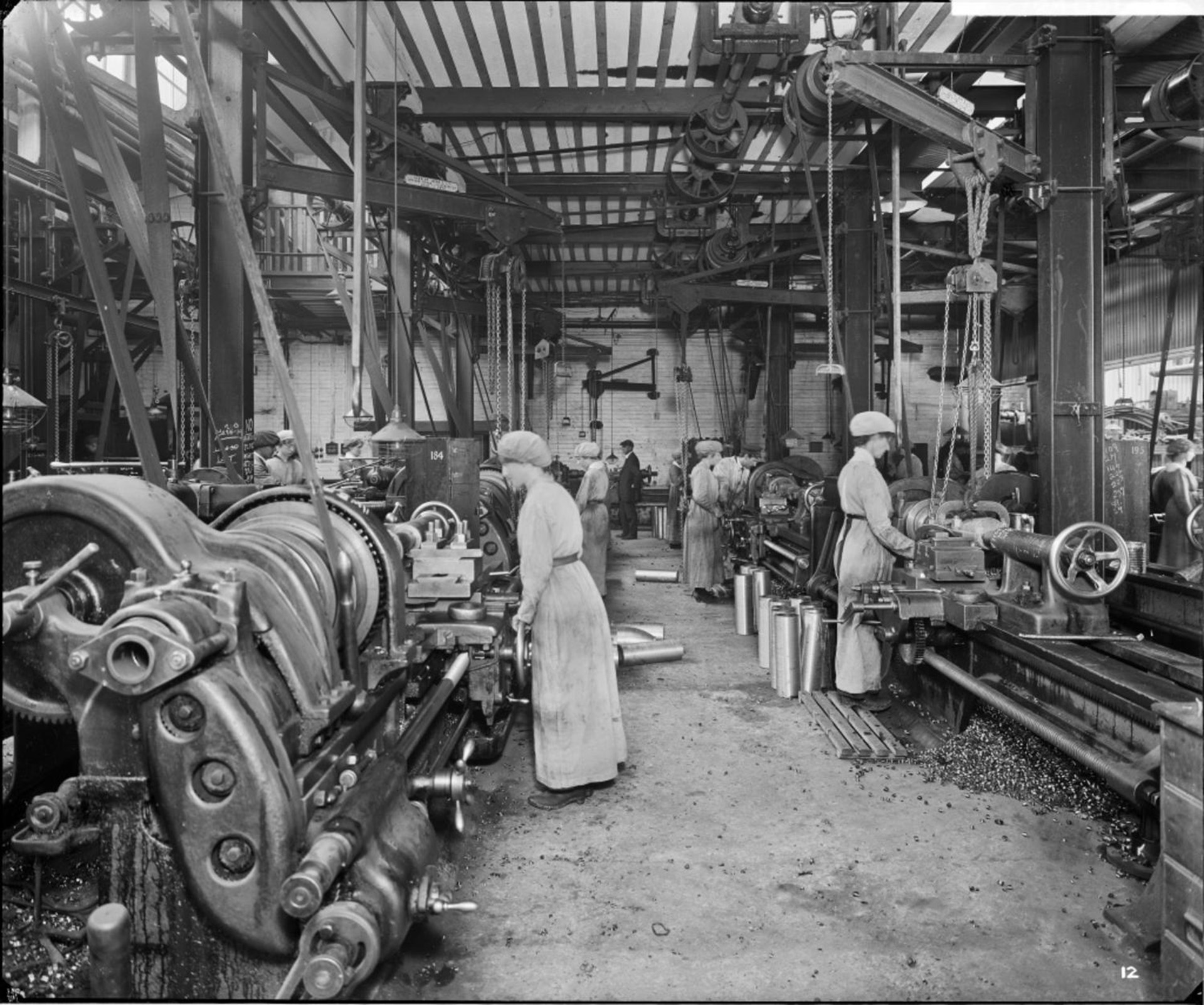First World War: Engineering Factories
In 1914 Britain was still the workshop of the world and by 1915 her industries had been adapted to manufacture the huge amounts of equipment and munitions required by her armies. Heavy armaments work was concentrated at the Royal Arsenal, Woolwich, London, and ship building and armaments manufacturers on the Tyne, Mersey, and Clyde. A newer arrival was the Coventry Ordnance Works.
Many civilian workshops, for example, those managed by the large railway companies were easily adapted to new uses. The manufacture of tanks by an agricultural engineering firm in Lincoln is well-known, but there are many other examples yet to be discovered.
In addition to adapted factories new works were also constructed, such as, the National Machine Gun factory at Branston, near Burton-on-Trent, built in 1917. Its neo-Georgian administrative block looks like a grand country house and is listed Grade II.
It also provided large welfare facilities, a canteen, and a bowling green - all highly innovative at the time. The war ended before production began, and later Branston Pickle was made here.
To assist in the development of new guns and to test guns before they were issued to the army and navy, the government and armaments producers maintained large test ranges. A new range at Yantlet Creek, Medway, was opened in 1917 which allowed test firing to take place over a 27km range.
-
First World War: Land
One of the features of industrialised, mechanised, 20th-century warfare was its hunger for land.
-
First World War: Sea
At the outbreak of the First World War Great Britain was the world’s greatest naval power.
-
First World War: Air
Historic England has identified the most significant airfields and airfield buildings of the First World War.





